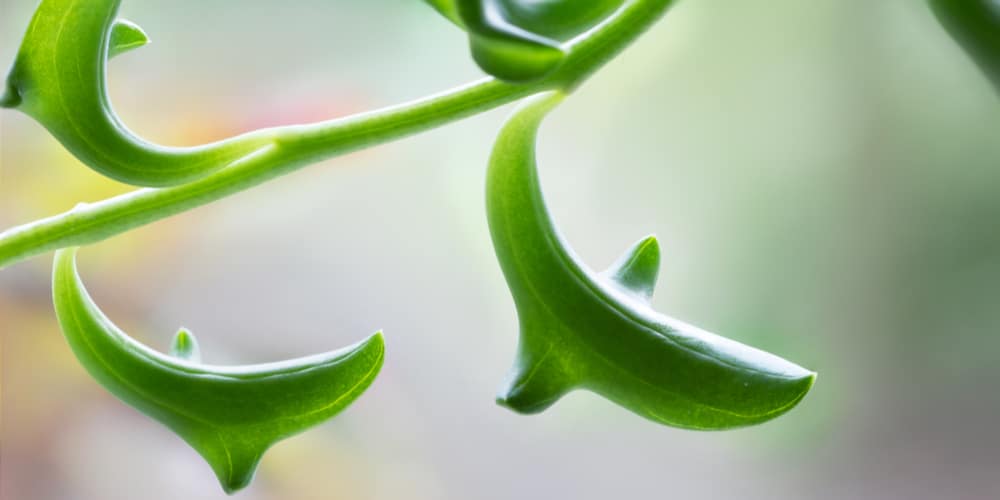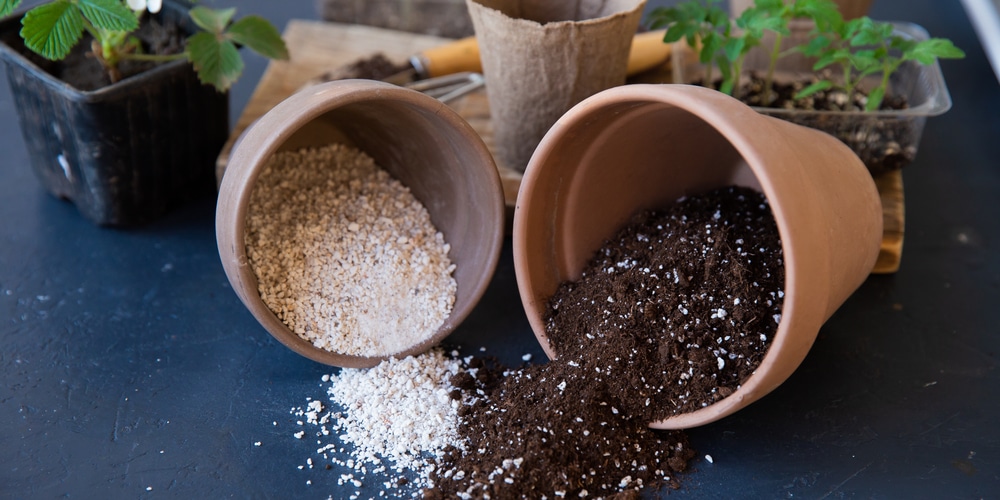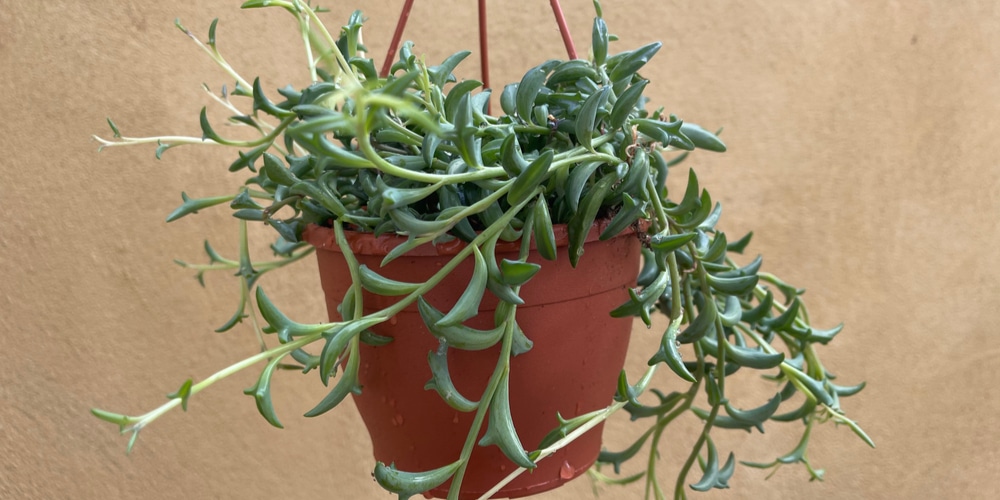String of Dolphin is a unique succulent that is a wonderful addition to any collection! Its leaves, which resemble dolphins, trail down slender stems with long tendrils. Also known as Senecio peregrinus, it’s a lovely cross between Senecio rowleyanus (a string of pearls) and ‘Candle plant’ (Senecio articulatus). They’re great indoor plants that also look fabulous in swinging baskets.
The String of Dolphins has become a popular houseplant in recent years due to its attractive appearance. The succulent thrives in springtime with clusters of cinnamon-scented white-pinkish flowers.
You can grow most of them in small containers, taking up little space in your household. If you’re fresh to growing these succulents, the minimal attention they require may seem strange at first. However, aren’t they supposed to be too much work? Not succulents, though.
What is the best way to look after a String of Dolphin plant?

Succulents are incredibly trendy nowadays, and it’s easy to see why. These adorable little plants come in a wide range of colors and are very easy to take care of.
As with many succulents, String of Dolphins thrives in a state of salutary neglect. They require very little attention. These crops are great for starters or individuals who may not have a huge amount of time to fuss over potted plants because they require long periods between waterings, very little fertilizer occasionally, and a sunny position.
Sunlight
The plant thrives well in a place with enough vibrant and indirect light throughout the day. Maintain the plant under a bright room in which it will receive about six hours of indirect sunlight per day. This succulent will thrive in a bright, south-facing window. However, keep it out of direct sunlight, which can cause sunburn and unsightly dark patches on its delicate leaves.
You can use grow lights to provide additional light for the String of dolphins if necessary. It does not require special watering methods, but it requires more humidity throughout the spring to fall season when it grows stronger than during the colder months.
Watering
Between waterings, allow the soil to completely dry. Bottom watering would benefit a string of dolphins – immerse it in a bucket or sink. Some other method to water your crop is to place it in a kitchen sink, run water through the jar, and then out the drainage hole. Repeat the process twice more. In summer, water once a week and once per month in the winter. Allow no water to sit in the tray of pot.
Pruning
To remove dying or yellow leaves or regulate the crop’s trailing stems, prune the String of dolphins. You can prune string succulents to inspire more growth. Some Senecio plants begin to grow several stems from the trimmed pruned plant. You could, of course, pluck off curvy stems to assist the plant look better.
Humidity
Once grown indoors, a string of dolphins develops well enough in average household humidity and temperature levels. Surprisingly, despite not being frost-tolerant, such plants thrive in cooler temperatures than the average succulent. They can withstand freezing temperatures as low as 40℉, 4 degrees Celsius.
It doesn’t need high humidity since it’s a dangling succulent that emerged in a drier globe area. It’s unnecessary to moisten the plant or use a humidifier, pebble tray, or plant humidifier. Excessive humidity can cause leaf rot.
If you reside in a cold climate, you won’t need to be as cautious about putting your plant close to a cold or draughty windowpane as you should with the String of pearls.
String of Dolphin Fertilization
The String of dolphins does not require fertilization regularly. Overfertilizing the plant can make the foliage lose its distinctive dolphin shape. They could, however, gain from the light eating in early spring to assist with growth and development.
It is highly advised to use natural fertilizers like worm compost, fish emulsion, or liquid kelp. From spring to early fall, fertilize the String of dolphins once per 6-8 weeks. You shouldn’t fertilize the plant during winter because you wouldn’t need to stimulate growth. You should use diluted liquid natural fertilizers to half strength.
Type of Soil
A string of dolphins, like most succulents, necessitates arid, properly-draining soil. You grow the plant in commercially available succulent blends, but you can also make one while at home. Two portions potting soil, one portion perlite or pumice, and one part perlite.
If overwatered, the String of Dolphins will rot as with most succulents. As a result, choose soil that drains well, like a succulent combination, and put them in a jar with a drainage opening at the bottom.
String of dolphin propagation
Making baby succulents is simple, and these crops aren’t an exception. Take trimmings from stems about six 6 inches long during the growth period. Allow for callus formation at the bottom of the cuttings. It could take several days.
Open a tiny hole with a chopstick or your finger, insert the cutting, and strengthen the soil surrounding it. That’s all there is to it. Rooting hormone isn’t required for new roots to grow quickly.
Until the new plant has rooted, you may have to mist it more frequently. Keep a close eye on it, and suppose the plant begins to wilt, boosting your frequency of watering. You can also cut off from a 2-3-inch segment of a good health stalk and put the base inch of trimming into a bowl of sterile pot soil. The stem clippings will grow roots in about a month without much attention other than a sunny windowsill and watering.
You could use the rooting hormone if you want, though it isn’t required. Strings of dolphins are one of the most simple succulents to grow.
String of Dolphin: Final thoughts
The string of Dolphins is a fantastic succulent with curvy blue-green foliage that resembles jumping dolphins. Its unique appearance will make you feel like you’re on the beach throughout the year!
The String of Dolphins flower looks stunning in vertical gardens and hanging baskets where its leaves could cascade gracefully. It’s a rare succulent that’s hard to come by, but it’s well worth the time and effort and would make a wonderful inclusion to your bundle!
With that said, note that dolphins flourish in a slightly crowded environment, so utilize a container that is only slightly larger than they are.

